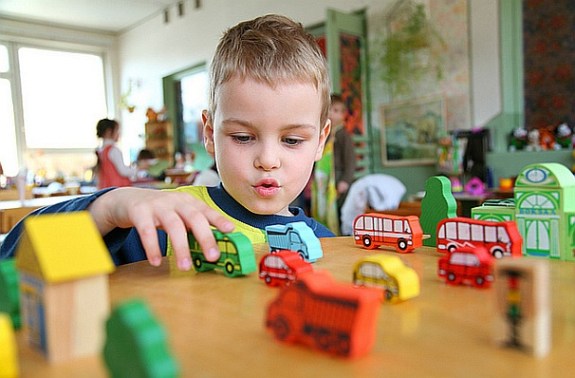
Your kid’s eyes light up at the sight of toys. It seems that his attraction for toys is instinctive. Maybe this is because toys fulfill his needs for using his imagination and his need to explore, pretend, and share. Toys are not only fun, they can also be valuable tools to make your kid smart – and they prepare him for skills needed to be an adult.
The best toy for your kid is the one that he chooses – and it can be as simple as a cardboard box or pots and pans. When he enjoys a toy, it provides him the greatest learning experience. Your kid is a natural learner and anything that interests him will teach him something. Also, the more variety of toys he has, the happier he is, and the more diverse his learning experience will be. He may not have access to all the toys he likes, so some you have to provide some of them yourself.
Choose toys that are developmentally appropriate for your child’s age – if it is too advanced for him, he might get frustrated with how difficult it is to play, and he will abandon it. Worse, it may even injure him. If the toy is for a younger age, he will find it boring.
Choose toys that are appropriate to your child’s gender.
Observe your child to determine his likes, interests, his skills level, his favorite characters, etc. to know what toy he will enjoy.
Choose toys that require imagination. These are open-ended toys that leave playing to the imagination. Avoid toys that can only be played in only one or a few ways. Toys that run on your kid’s imagination are better than those that run on AA batteries. For example, a Tigger toy whose limbs your kid can manipulate endless ways is better than a Tigger toy that can only somersault. Playing toys by making believe enables your child to test his idea about the world and develops his creativity. Research has also shown that this also develops language and lengthens your kid’s attention span.
Choose toys that allow your child to do something to them like snapping them together or shaping them. They improve your kid’s spatial intelligence and depth of perception. He also learns about shapes, colors and sizes.
Give your kid a variety of toys where he can learn a variety of skills. The Teachers Resisting Unhealty Children’s Entertainment group lists the benefits of particular types of toys:
When you give your chosen toy to your child, don’t just hand it to him and then shoo him off to play. Play with your child, explain how the toy works and what’s fun about it. Playing with your kid makes him feel loved, and this enhances his learning. Also, observe if he really gets interested. If not, the toy may be too advanced for him. Keep it until he is ready for it.
Introduce new toys one or two at a time. Too many choices overwhelm your kid, especially if he is an infant. You kid is more likely to make the most out of every toy and be comfortable with its familiarity if you slowly add new toys to his collection.
Make sure the toy is safe. This is especially true for your infant or very young kid. Make sure, for example, that your baby’s rattle doesn’t have holes that trap his fingers. Kids love to put toys in their mouth (as well as other holes in their body), so avoid toys that your kid can swallow and choke on. For your older child, check if toys that are designed to take his weight are sturdy and have no mechanical defects.
Store toys in such a way that your kid will be stimulated to play with them – like arranging them into little scenes or other creative arrangement. Don’t just dump everything into a toy box where your kid doesn’t even remember what is in there.